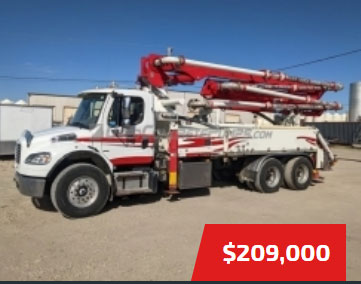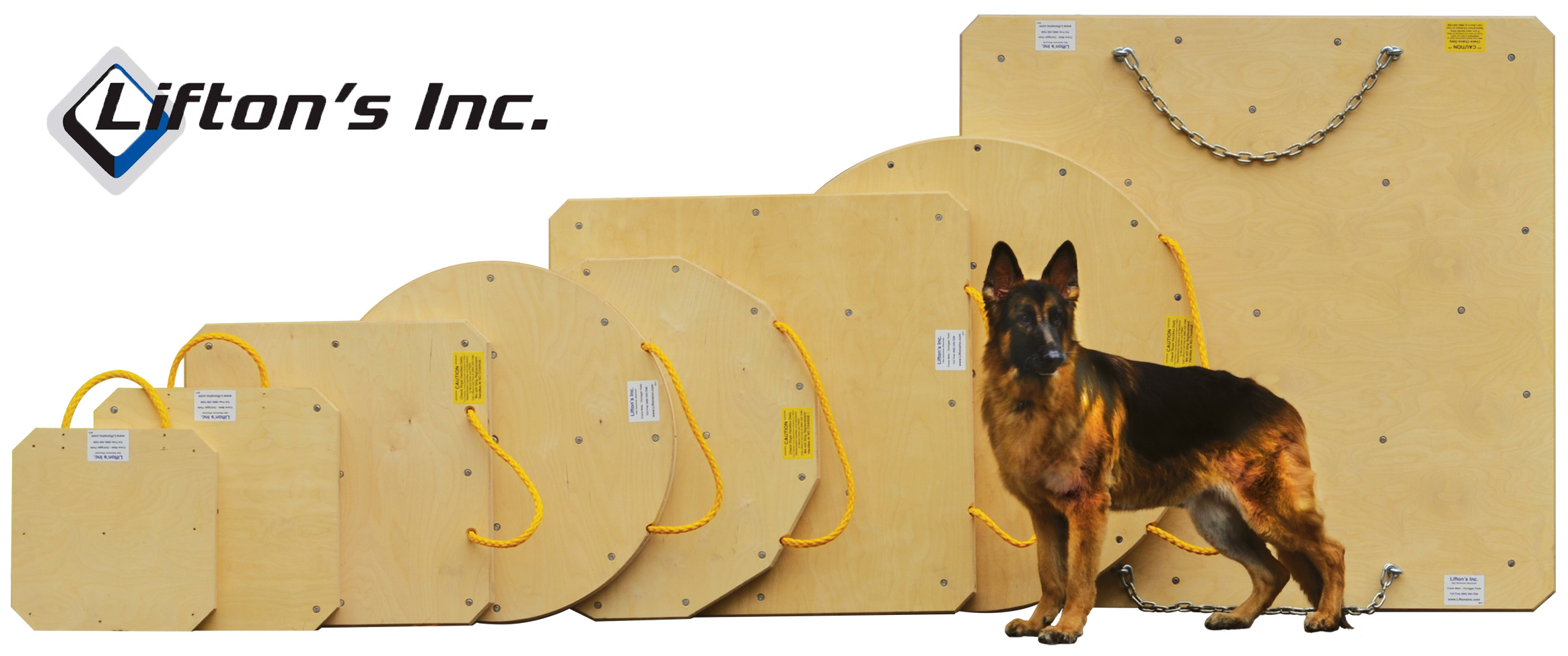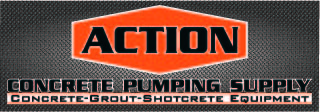| pudg | 04-23-2009 | comment profile send pm notify |
|
Okay when you are stretched all the way out every pump I have ran the offside outriggers tend to get light occasionally losing touch with the ground, this is normal, in the last few months I have had 2 occasions where I have had to contact manufacturers and get the engineering or safety dept to send info saying this is ok, neither manuf.(the 2 big boyz) have any literature pertaining to this in the operators manual,why ? this is a everyday occurence why would it not be addressed ? so when people who know nothing about pumps ask we have something in writing to address this issue.Most safety personnel in industrial plants base all their info on cranes , we are not cranes I do not know how much I stress this,it is a totally different scenario we do not lift loads we only lift our booms and the trucks are designed to pump all the way extended try this with a crane and you will end up tipped over ,its just something I think needs to be addressed and the big boyz make a statement, either back me up or take a stance saying this is not acceptable , or design a pump when its level all outriggers will stay on the ground no matter what position your boom is at. |
||
| huello | 04-23-2009 | reply profile send pm notify |
|
i dont know pudg but in my opinion u have to make sure that you are seting up the pump the rigth way and yes that has happen to me but all i do is stop the pour and make sure that i have the outrigers the rigt way b.c sometimes you have to lifth up so it can make some more weight and slow down the pump so you can have absolut control of the boom with out having that problem and if im wrong please some one tell how its done |
||
| Pump N00b | 04-23-2009 | reply profile send pm notify |
|
As long as your other outriggers are on stable ground and you are withing 3 deegres your safe. |
||
| zuat150 | 04-23-2009 | reply profile send pm notify |
|
what size booms are you running? I had a 55 schwing that used to inflate the airbags every once in awhile and mack had to fix it. |
||
| pudg | 04-23-2009 | reply profile send pm notify |
|
for those who dont know I have been pumping over 20 years and yes in that time I have learned to set up a pump or two , ther reason fot this post is to see how many says they can do it 100% of the time, there is no second setting of the outriggers its get it rite the first time or as they said you will be dismissed from the job, whomever says they can hit this everytime with a pump over 42m everytime is either a liar or just to proud to say it cant be done,i am not, most pumps it cant be done I ran a schwing 42m and it was pretty good about staying down but most of these pumps these days with the way they makem as light as they can they are gonna float period and the manufacturers need to address this so we dont look like we are committing unsafe acts is my point. |
||
| Slinger | 04-23-2009 | reply profile send pm notify |
|
I have to agree with you pudg. I run a 36m Putz and it has a habit of floating. I have had a few people tell me that my riggers are off the ground and I just ask them how far. As long as I stay within my limit I carry on, and have not yet had to reset in order to carry on. I have shown people that I am not sinking on the pumping side, more to the fact that my counter balance is a little off. As to finding any reference to this, they tell you in the handbook to set up within the 3 degree limit and that additional cribbing may be required due to tipping hazards, but I haven't read anywhere that if your light sided riggers start to lift that " don't worry that is normal". Still searching for that section. |
||
| Todd | 04-23-2009 | reply profile send pm notify |
|
I have got an email into the man, Rob Edwards. He has never dodged a question and always shoots strait so lets see what he says about it. |
||
| local18 | 04-23-2009 | reply profile send pm notify |
|
Pudg, I ran a 42m Schwing before i got a 45m, and i agree with you the 42m seems to stay on its outriggers a little better. I'm like you i've tried to set the pump up about every way possible and still get the teeter totter going on. Just seems like some days are better than others. 18
|
||
| Pump N00b | 04-23-2009 | reply profile send pm notify |
|
If you compare a pump to mobilecranes they have up to 6 outriggers, counter-weights and not the X type riggers most pump comes with these days. |
||
| CretePumper | 04-23-2009 | reply profile send pm notify |
|
I have a run 36m 40m and now a 45m not one of them will stay planted on the dead side when they are flat sticked |
||
| mrmike36z | 04-23-2009 | reply profile send pm notify |
|
The question is why is the non working side getting "loose"? Ya set it up and stretch out over the working side to test the soil and setup, it's good. Concrete shows up and ya get that extra weight in the boom and then that outrigger gets LOOSE, well why. Is it because of the outrigger pad and dunnage compacting the soil a little or is it just natural flex of the machine with the extra weight of the concrete. If I come across this in my day to day jobs and I find a out rigger loose and the opposite outrigger has not sunk or compacted and I am still in the safe bubble zone then I just "tighten up" the loose outrigger and 9 times out of 10 it never gets loose again. It is tough to set up a machine and keep all 4 legs on the ground while working over just 1 outrigger. A lot of weight and flex on 1 outrigger.
I have set up on concrete b4 and there is absolutely no ground sinking there and a outrigger still gets loose. Is it flex or oil compressing or a holding valve problem? |
||
| cp1 | 04-23-2009 | reply profile send pm notify |
|
I'm interested in hearing a manufacturer's perspective on this too pudg. Many operators appear to believe that this is because of the truck suspension (springs, airbags) but the truck is completely taken out of the picture when those outriggers are out. So this really is the beginning of the pump tipping over because they designed the outrigger spread and machine weight with such close tolerance. I used to be more nervous about it than now, but it still goes through my mind and doesn't sit well that this happens. And, by the way, hydraulic oil doesn't compress, so it has nothing to do with the oil or hyd. system. |
||
| TooTall | 04-23-2009 | reply profile send pm notify |
|
They all do it pudg, at least all the ones I've ran? The only way to set up without having to "reset" after stretching out and loading the boom is to compensate by preloading the working side outriggers. Depending on soil conditions, lift the working side 2 degrees higher and firmly plant the opposite side. Unless a pad sinks a little, that's the only way I have found to keep all fours on the ground on a one shot deal? As far as the safety guys are concerned, just humor them. We as operators know that it's not a big deal to have a foot float a couple inches. But to people that dont know any better it looks like the pump is gonna flop! I just tell'em "thanks for noticing" then I drop it back on the pad, just to make'em feel better? Personally I seem to run the boom better with a little floating action. Whenever I'm booming out I can tell the second that my back leg is floating because the boom settles down and the truck absorbs some of the shift shock. If it's more than an inch or two I'll stop and adjust it. With pumps that carry water in the rear outriggers it helps having them full of water/fuel for counter weight also. |
||
| Todd | 04-23-2009 | reply profile send pm notify |
|
It's is addressed in the new version of ASME B30.27 (The American National Standard for concrete pump manufacturing , inspection and usage.) It will be available for purchase from ASME by mid-May.
I'll send you a link to download when it's available. If I forget, please remind me.
What it says is that three outriggers have to remain on the ground at all times; one outrigger coming off the ground does not signify a condition of instability.
(It's for the tipping test, but it applies to actual pumping, too.)
Rob Edwards |
||
| GPJ | 04-23-2009 | reply profile send pm notify |
|
I do the same as mrmike36z only exeception is over the front on 58/61 if im over front ill lift up front before pouring than adjust as i come in. However slewing more than the width of your cab is very bad for the slewing gear when your out more than 3 degrees. |
||
| ftworth58 | 04-23-2009 | reply profile send pm notify |
|
I have floated many a outrigger,after booming out,and full out full of mud,my main concern has always been the sinking of the side i am boomed out on,if it is the same I will ajust acoording t the situation,every one is different,no setup is ever the same.However if you are shortrigged on the other side,and your boom is between full extended side and you dont go past those outriggers,and you stay within three degrees of being level,then does it matter is fully deployed outriggers lift up a little,or alot? |
||
| TooTall | 04-23-2009 | reply profile send pm notify |
|
Reeds dont float much. Those dragonfly outriggers are burly and rigid, but also heavy. Some float worse than others. |
||
| Drew AUS | 04-23-2009 | reply profile send pm notify |
|
My machine is like noa`s ark , somedays nomatter what you do you cant stop it !! So all i do now is get the green horn mixer drivers to stand on the foot and tell them dont let go it might tip over hehehe Ive only ever got one guy but its worth trying every greeny .. mate that was funny! |
||
| PUMBO | 04-24-2009 | reply profile send pm notify |
|
MrMike: your machine's center of gravity changes when empty and with concrete. Normal for an outrigger to float as manufacturers design outrigger footprint with around 10% extra tolerance beyond tilting point. Note some different types of aggregate have different weight properties, some twin wall pipes can be slightly heavier as well. If your boom is swaying violetley at full reach: your end hose is too long/heavy OR slow down the flow OR rid the pipeline of reduction OR lift the opposite diagnal outrigger to curb a floating outrigger. Your water tank (eg. 600KG) should be always full in operation and diesel tank even acts as counterweight. A violent boom in operation, increases stress on boom pedestal, joints, chassis, and outriggers and may lead to failure. Tilting the truck slightly higher on the loaded side works well with trucks with telescopic outriggers AND always use reinforced dunnage as a precaution on the loaded side. |
||
| Many | 04-24-2009 | reply profile send pm notify |
|
I pick answer A I have had a few people tell me that my riggers are off the ground and I just ask them how far Do they all do it? my bookie says "yes" some more than others.Once someone says something I always want to check the loaded side,an off side bouncing can be an indicator of a upcoming disaster.
|
||
| Telealbelt | 04-24-2009 | reply profile send pm notify |
|
If its made of steel it bends. Outriggers and booms bend. How brave you are determines how safe you are. Don't get too brave and you'll be safe. Slow the pump down helps . |
||
| Nebuchadnezzar | 04-24-2009 | reply profile send pm notify |
|
This is why I keep a stash of wedges on my pump, I can just jam them under the outrigger......problem solved. There is nothing wrong with readjusting your outriggers after your weight has shifted. Sometimes you hit your setup righton, and sometimes you have to compensate. Anybody who tells you they get it perfect everytime, is probably someone who has worked for 20 different pump companies and is alwyas looking for their next job. |
||
| Todd | 04-24-2009 | reply profile send pm notify |
|
Do any of you guys have any pictures concerning this issue? |
||
| Leroy | 04-24-2009 | reply profile send pm notify |
|
Floating outriggers? I wish! I was hoping this was a new invention for maritime jobs? Oh well, I dont even have outriggers so pump off... |
||
| Raymond | 04-24-2009 | reply profile send pm notify |
|
Rusty22-- Nice...Cross-weight. I was wondering if anyone else knew how to set up a racecar....except for Art.. So, if the left-rear is lifting off the ground, I increase the right-front on the working side to bring it back down. I wonder how many would simply adjust the lifted outrigger?? Sooooo many variables to pump set up...pump size, terrain, outrigger design, boom color...etc... |
||
| rusty22 | 04-24-2009 | reply profile send pm notify |
|
The putz does it more than swang The putz is lite.I have always made the opposite riggers higherSo if im workin on the dr side the outriggers are higher on the pass side the to carry more weight sort of like setting up a stock car |
||
| Telealbelt | 04-24-2009 | reply profile send pm notify |
|
It's all about making it look better. No weight on the high side anyway. Not gonna make any safer besides the more weight you take off the high side the less counterweight. Just make em touch then check later to see if it got worse. |
||
| Todd | 04-24-2009 | reply profile send pm notify |
Maybe this will help a bit. www.cpmass.com/images/23343/43364_cpmaNbook.pdf section 27-2.2.2 part d (page 21) Putzmeister has further detail in how many mm of float you can have in their manual Regards, |
||
| Pump N00b | 04-24-2009 | reply profile send pm notify |
|
Section 27-2.2.2 page 21, I think... |
||
| pumpwrench | 04-25-2009 | reply profile send pm notify |
|
The off side is always light, (floating). The manufactures pay alot of attention to placement of the subframe of the concrete pump to the truck frame. They know how much every inch weights. One inch forward or back can make a 500 to 700 lb difference. The most common question asked of me as a service tech for a major pump manufacture is, can you show me how I'm supose to set up my outriggers? In many cases the operator was either heavy on his outriggers or light. The correct way I was taught is to set the outrigger until the tire leaves the ground, then bring it back down until the tire just makes contact with the ground. Work your way around the unit doing the same thing and keeping it within your 3* of level. I've seen units setup with all the tires off the ground. When your tires are making contact with the ground, they will share a little weight of the units outriggers, often contributing to less boom bounce, and making the unit more stable all the way around, and will help with settling, think of them as mini-assisting outriggers. I know some jobsites can be challenging and somtimes it may be necessary to crib the tire thats in the air in order to prevent suspention damage or from an airbag being pulled apart from a bouncing axle. If your cribbing under the outrigger is correct, the outriggers are set properly, and your legal with what's hanging on tip section, you will be able to do 20 to life in the pumping industry! If you had a girlfriend that wouldn't move a little bit and wasn't light on her feet when you were booming, you would be dissapointed every time! LOL! Be Safe. |
||
| nzpump | 04-25-2009 | reply profile send pm notify |
|
The truck weight acts as a counterweight for the pump that means that the truck springs should never be compressed. |
||
| bri | 04-30-2009 | reply profile send pm notify |
|
even flat out on my 60m most the time the non working side stayed on the ground if they came up (rarely) I would adjust |
||




















.jpg)
.gif)

.jpg)









.jpg)








